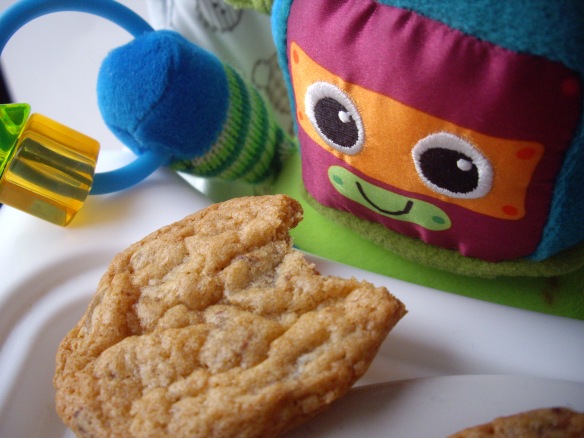It’s true. My tummy said so…and my tummy’s bigger than your tummy! Granted, England isn’t known for its cookies and most of the population over forty would probably choose tea and cake over milk and cookies. There will be countless more across the pond who no doubt will stand up and be counted for coffee and donuts. However, what I’m sharing with you today is nothing less than my ultimate, works-every-time, so-easy-to-make, can’t-wait-till-they’re-out-of-the-oven recipe. I’ve tried so many recipes over the years and often been disappointed. That’s why I decided to combine the best bits of every recipe I’ve tried to make these beauties.
The dough recipe is nice and easy, but the best part is that once you’ve got the dough recipe, you can make any type of cookie you want. That’s why I love these. Today I’ve made a batch that give a little tip of the hat to my favourite biscuits, dark chocolate gingers. I have quite a thing for them and I’ve had to stop buying them lest I begin to resemble one.
You, dear friend of food, can load up your cookies with whatever takes your fancy. I’m sure you have your own amazing cookie dough recipes and it’s likely that they will make my attempts look like My First Cookies, but let me tell you, when I’m going for an ice-cold glass of chocolate milk (and I do so far too often), these cookies are the perfect partner!
What’s your favourite type of cookie? What should I put in my next batch?
Dark chocolate & ginger cookies
300g plain flour
215g light brown sugar
200g dark chocolate (chopped into little chunks)
170g melted butter
120g caster sugar
120g glace ginger
1 egg
1 yolk
1 tblspoon vanilla extract
1 tspoon ginger powder
1 tspoon salt
half tspoon bicarbonate of soda
Beat together the egg, yolk, butter and sugar. Add the vanilla and combine with the soda, salt, ginger powder and flour to form a thick dough.
Tip in the chocolate and the glace ginger (or whatever ingredients you are using) and work them into the dough with your hands. Wrap the dough in clingfilm and refrigerate for half an hour.
Preheat the oven to 180C. Line a baking tray with baking paper. Break off small chunks of dough, roll them into balls and press them between your palms so that you have little pucks to place on your baking tray. The cookies will flatten and spread out in the oven, so leave enough space between them. They’ll be done in less than ten minutes.
For years I made brittle, crumbly cookies. It was because I used to bake them until completely brown all over (thinking that they were done). For perfect, chewy cookies, however, it’s important to take them out of the oven to cool while they are still soft. Wait until they are beginning to brown at the edges and then use a fish slice to transfer them to a wire rack. They will firm up once cooled.
Enjoy and let me know how they turn out!












